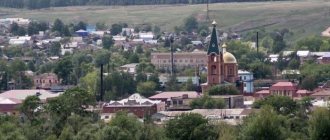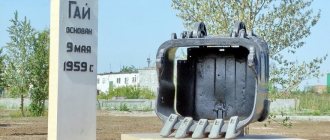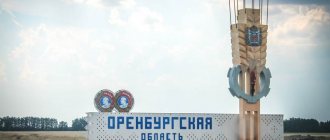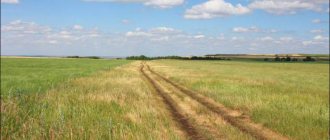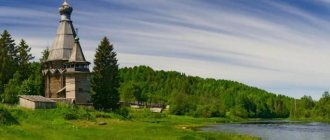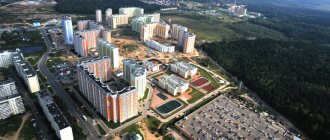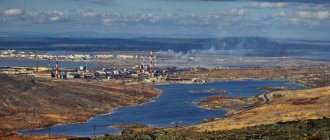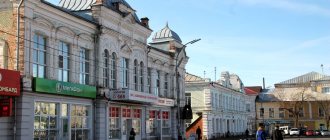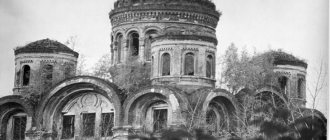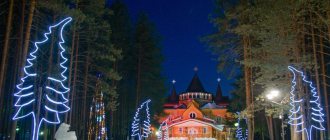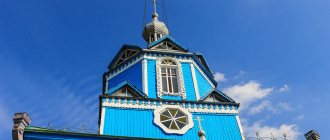This city, located in the vast Orenburg , is usually associated with two episodes of his life - the arrival here of the rebellious army of Emelyan Pugachev and the short stay of Alexander Sergeevich Pushkin . Events that are significant for a provincial town and deserve great attention, but not the only ones.
Photographer: Sergey Suvorov
Over its almost three-century existence, Sorochinsk has experienced many events that deserve attention and respect for its residents. There were many sad moments in his history, but there were no less reasons for joy. The joy of creation, the joy of victories in one’s small homeland and common, nationwide victories.
City in the distant steppe
Like most eighteenth-century cities that emerged on these lands, Sorochinsk was built as a fortress. Later, it went beyond its borders and began to grow with the dwellings of peaceful workers, who gradually developed the lands surrounding the fortress and were engaged in handicraft production.
Photographer: Sergey Suvorov
The impetus for the construction of first the fortress, and later the city, was the famous expedition of I.K. Kirilov. In 1736, among the three fortresses of the Samara distance, a defensive structure was laid in Sorochinsk.
Until November 1773, the life of people in the Sorochinsky fortress did not differ from how the inhabitants of other similar structures lived in the Orenburg steppes. People served, started families, settled down. That distant autumn, the garrison of the fortress had to make a difficult decision - whether to fight the enemy, who was advancing on the city not from the home of the hordes of nomads, but from the lands that the garrison was obliged to defend.
Sorochinsk surrendered to the Gugachev army without a fight, coming out to meet him under the ringing of bells with a white flag. This event was preceded by propaganda work carried out by Cossack Timofey Chernov and retired sergeant Pyotr Babaev. There is an assumption that it was these people who persuaded the soldiers to go over to the side of the rebels.
The loyalty of the Sorochintsy to Pugachev’s army did not save the fortress from destruction. Retreating, he ordered it to be burned. The fortress was restored after the defeat of the rebels. And it existed until the need for defensive lines disappeared. Then it was decided to abolish it.
Sorochinskaya fortress and the Pugachev uprising
By the time of the Pugachev uprising, the Sorochin fortress had 128 households with 745 inhabitants. The first reconnaissance detachment of the rebels appeared here in the second half of October 1773. The Sorochinsky garrison not only did not offer any resistance to the Pugachevites, but also joined them. From November 17, the fortress was under complete control of the rebels and remained in their hands for about four months.
From the beginning of January 1774, military operations began to shift east of Samara. The corps of General P.M. was moving towards besieged Orenburg from the Buguruslan settlement. Golitsyn, and along the Samara distance the brigade of General P.D. launched an offensive. Mansurova. Pugachev, led by a detachment of 1,500 people, arrived at the Sorochinsky fortress to give battle to General Golitsyn. On March 5, the vanguard team of the imperial troops under the command of Major V. Elagin entered the village of Pronkino and settled down here for the night. On the morning of March 6, the soldiers were suddenly attacked by rebels led by Pugachev. General P.M. Golitsyn wrote about this battle in his journal: “Major Elagin, being in the village of Pronkina with an advanced detachment [a separate detachment], which included more than 500 infantry and cavalry people, 4 guns, in the very darkness of the night and during a strong snowstorm, was forced to withstand unexpected attack, he immediately established order here and was ready for defense, but was killed during the first attack.” The battle lasted more than three hours. Pugachev's attack was repulsed, and he retreated to the Sorochin fortress. To impede the advance of government troops, Pugachev burned the Sorochinskaya fortress on March 7, 1774 and retreated to Tatishcheva. It took many years to restore the fortress to its previous form. But due to changes in Russia’s borders, it no longer had the same significance.
After the suppression of the Pugachev uprising, life on the Samara line of fortresses returned to its previous course. In addition to the Cossacks, Kalmyks of the irregular Stavropol army carried out cordon service at the Samara distance. Lands (“koshes” and “uluses”) were allocated for them in the area between the Samara and Greater Uranus rivers. And around the Sorochinskaya fortress, settlements began to arise that still exist in the area, founded by settlers from the central Russian provinces - Tambov, Kursk, Penza and Ryazan.
In 1781, by decree of Catherine II, the Buzuluk district was formed, which included the territory of the Sorochinsky district until 1928. In 1798, a cantonal system of government was introduced in the Orenburg province for the military service population. In this regard, the Sorochinskaya fortress was transformed into a village of the Orenburg Cossack army, and from the middle of the 19th century it acquired the status of a village.
Finding itself in the thick of the Pugachev uprising, Sorochinsk attracted those interested in these events. Thus, collecting materials for writing the story “The Captain’s Daughter” and “The History of the Pugachev Rebellion”, A.S. Pushkin, accompanied by V.I. Dalya, on the way from Samara to Orenburg on September 17, 1833, stopped at the Sorochinsky fortress at the Yamskaya station, which was located on the site of the current building of the regional financial department. The poet-historian stayed here for only a few hours, recording the stories of old-timers - eyewitnesses of the events of the Pugachev movement in the area. He received interesting information from the 86-year-old Cossack Ivan Larionovich Popkov (in Pushkin’s recording he is called “Papkov”). Pushkin recorded memories of the rebellious Yaik Cossacks - participants in the uprising of 1772 and how Popkov I.L. was a guide in the campaign of Golitsyn’s corps from the Buguruslan settlement to the Sorochin fortress in early March 1774. This material was later used by the author in his works.
Occupying a convenient geographical position, Sorochinsk becomes one of the strongholds in the trade of the center of the country with the countries of Asia. The tract passing through it, laid by merchant caravans along the fortresses and going to the city of Samara and further to the west of the country, received the name Moskovsky. Salt, fish, honey and wax, bread and livestock, furs went through it to the south, and from the south - cotton and silk fabrics, ready-made clothes, Bukhara merlushka, cloth, gold, silver.
Large bazaars and fairs were held on the village grain square (now the Rus cafe). Bukhara, Khiva, Tashkent, and Afghan merchants took part in them. The Kazakhs brought livestock for sale. Factory and plant industrialists exhibited fabrics, tanned leather, shoes, paints, metal products, dishes and jewelry, and sugar in trade rows. Residents of Sorochisk and surrounding villages sold bread, meat and dairy products.
It happened that the bazaars did not fit on Khlebnaya Square, they occupied Nevskaya Street (modern Leninskaya Street), Dvoryanskaya (K. Marx Street), Troitskaya (Internationalnaya Street) and even Shatskaya (Moskovskaya Street).
In 1876, the Samara-Orenburg Railway was built and Sorochinsk became a station. Train traffic began in January 1877. One of the first passengers to travel along it and visit Sorochinsk land was L.N. Tolstoy. Already 20 years later, through Art. Sorochinskaya sent 4,250 thousand pounds of various cargoes, mainly bread, per year. The regional historical folk museum houses a bell that hung at the entrance to the station building and notified passengers about the arrival and departure of trains, as well as lanterns that illuminated the platform and station tracks. From 1874 to 1877, a station building, barracks (barracks) for the accommodation of railway workers, a pumping station and a water tower, a rest building for train crews, and a bathhouse were built and put into operation. To supply water to this large farm, a wooden water pipeline was laid, the route of which ran along the street. Volodarsky. And the steam pump was installed on the shore of Samara. Then the water supply was installed along the street. Nevsky. This water supply system is still in operation today. The last dispenser for refueling steam locomotives with water was dismantled in 1999.
In connection with the construction of the railway, the village received the opportunity to attract capital for development. In 1870, construction began on the first buildings, such as the Agency of the Trade Industrial Commercial Bank, the Siberian Bank, the Trading House “Heirs of Commerce I.V. Alexandrov”, Sokolov Trading House, etc. The village of Sorochinskoye has turned into a large commercial and industrial center with a population of more than 5 thousand people. There were two churches, two schools, a volost government, a hospital, up to 40 trading establishments, a postal and telegraph office, a large steam mill, and the Korshunov meat-packing factory. During World War I, this factory fulfilled a government order to supply the army. In 1914, about twenty tons of sausages and hams were produced here every day. Sorochinsk products were supplied to the best metropolitan restaurants and houses of noble nobles, right up to the imperial court. It had its own trademark, but the main advantage was that it could not be counterfeited.
The first Sorochin school was wooden and built in 1877 (now it houses the military registration and enlistment office). Following it, another educational institution was erected - a two-story elementary school on the corner of today's Karl Marx and Lenin streets, but it has not survived. At the beginning of the 20th century, a two-story brick “ministerial” school was built (now here is the main building of school No. 2) and another school was built in the year of the tercentenary of the Romanov dynasty (now it houses the Center for Children's Technical Creativity). An educational institution for Muslim children, a madrasah, was opened at the mosque. At the Church of the Archangel Michael there was a mixed two-year four-year church and parish school, which began operating in 1891, and a second-class church and parish men's school.
At the end of the 19th and beginning of the 20th centuries, active construction of churches was underway in Sorochinsk. The five-domed Kazan-Virgin Church was erected. Funds for its construction were donated by eminent merchants of the village - the Mikhalevs, Isakovskys, Ignatovs, the manufacturer Korshunov and others. But after the establishment of Soviet power, the church was destroyed, and in this place there was a city stage. Now there is a memorial cross installed here in 2009.
Built in 1852, the wooden church in the name of Michael the Archangel burned repeatedly, and it was decided to build a stone church in its place. On May 25, 1901, a three-altar cathedral church was founded in the village in honor of the Archangel Michael of God on the site of a previously existing church. Its consecration took place in 1911. It was erected under the tutelage of the merchant Lavrenty Snikin. This temple of ecclesiastical affairs was built by craftsmen drawn from different cities of Russia. The interior was painted by St. Petersburg and Moscow artists. Under Soviet rule, residents' access to the church was closed, property was confiscated, the Oktyabr cinema was opened in the building, and subsequently the city House of Culture. Currently, on the initiative of city residents with the financial support of the city administration and patrons of the arts, the Church of the Archangel Michael has been restored.
The railway as the main source of change
In 1876, a railway track was laid along the coast of Samara . A station was built in Sorochinsk. With its opening, agriculture and trade received significant development. Spring, summer and autumn fairs were organized. At this time, the construction of industrial enterprises for processing agricultural raw materials began here. Mills, slaughterhouses, and fat factories were built. People got jobs in the city. The qualitative composition of the population began to change. The number of representatives of the proletariat grew. The number of residents increased to five and a half thousand.
Photographer: Sergey Suvorov
Revolutions and wars did not pass by
The residents of Sorochinsk decided to support the power of the Soviets at a meeting on January 27, 1918. At the same time they elected a volost Council of Workers', Soldiers' and Peasants' Deputies numbering twenty-five people. However, soon the White Cossacks captured seven activists and brutally killed them.
Photographer: Sergey Suvorov
In the fall of 1918, the city was liberated by units of the Red Army. The headquarters of the First Revolutionary Army was located in Sorochinsk. The famous military leader Mikhail Tukhachevsky worked there, and Mikhail Frunze also came here. Vasily Chapaev and Dmitry Furmanov visited here.
Photographer: Sergey Suvorov
On May 1, 1919, the youth of Sorochinsk created the first Komsomol cell. In August of the same year, the first regional party conference took place in Sorochinsk. Alexey Rolf was elected first secretary of the district committee. In September, a prominent figure of the Communist Party and state, Mikhail Kalinin, came here. People called him the All-Union Headman.
Soon after the complete establishment of Soviet power, industry focused on processing agricultural products received new development. One of the first meat processing plants, dairy and mill plants in the region is being created in Sorochinsk. The process of collectivization of the economy is taking place.
During the Great Patriotic War, Sorochintsy fought along with other Soviet people and fearlessly defeated the enemy on their land and beyond. Many gave their lives for peace and freedom of their homeland. In their ranks are two Heroes of the Soviet Union - pilot Alexey Loshkov and guard Major Ivan Akimov.
Peaceful life
received the status of the village of Sorochinskoye back in the 19th century . On June 1, 1932, the village was transformed into the working village of Sorochinsk , 1945, Sorochinsk became a city.
Photographer: Sergey Suvorov
A truly calm life came to Sorochinsk after the Great Victory. She wasn't easy. As throughout the country, people were busy transferring the economy to a peaceful path. This was not always facilitated by political decisions, but the country was rising from ruins, and the residents of Sorochinsk made a significant contribution to this process.
Through conscientious work they maintained food security. This was especially important in the first post-war years, when famine had not yet released the country’s population from its clutches.
In the early seventies of the last century, oil fields began to be developed in the vicinity of Sorochinsk. An oil and gas production department, Sorochinskneft, is being created in the city. Today there are about 650 oil wells in the urban district.
Sorochinsk is one of the ten largest cities in the Orenburg region. According to this indicator, he was in seventh place. By the standards of the entire country, Sorochinsk can be called a solid average. As of January 1, 2022, the city was in 538th place out of 1,115 cities in the country in terms of population.
The names of many famous people are associated with Sorochinsk
Daut Yultyev, a famous Bashkir writer, a graduate of the Sorochinsky madrasah, went through the Civil War as part of the First Revolutionary Army of Guy, returning to his native place, he worked as a military commissar of the Sorochinsky volost.
For ten years, the famous Soviet writer A. A. Fadeev was a deputy of the Supreme Soviet of the USSR in the Sorochinsky electoral district. The author of "Destruction", "Young Guard" and other works came to Sorochinsk in 1946, 1950 and 1954, getting acquainted with the city and region. He helped the Sorochin residents in the construction of a bridge across Samara, in the construction of a regional library (now it bears his name), and in solving many other issues.
Over the years, on anniversaries associated with the name of Fadeev, many famous poets and writers visited Sorochinsk. Among them are Alim Keshokov, Anatoly Safronov, Petrus Brovka and others, as well as the writer’s son Mikhail Fadeev.
During the war years, an impetus was given to the intensive development of industry. And in the first post-war period, the production capacities of meat, dairy, and grain processing plants were significantly expanded, and modern workshops for the production of various products were gradually put into operation. The consumer services plant began producing carpets. On a fur farm located on the outskirts of the regional center, blue scribes and black-brown foxes were raised. In 1966, the diesel power plant was replaced by the large current Volzhskaya station. For a long time the city did not have public transport, only in the early sixties did freight taxis and the first bus appear on the streets. By 1966, the fleet already had 10 buses.
At the end of the war, geological exploration for oil began north of Sorochinsk. As a result of many years of research, several promising oil and gas fields were discovered. The birthday of the new oil region can be considered August 31, 1966, when well No. 216 at the Sorochinsko-Nikolskoye field produced a powerful oil gusher with a flow rate of more than 400 tons per day. On September 21, 1971, the Sorochinsky Oil and Gas Production Department was created as part of the Oreburgneft association. In 1972, Sorochinsk became the third center of the oil industry in the region.
Come! You will not regret!
Sorochinsk, which has preserved its history and at the same time looked to the future, has every opportunity for further development.
It is also interesting for tourists. A wonderful local history museum. Preserved unique buildings. Monuments and memorials, including one of the most famous - a monument to the work of Alexander Sergeevich Pushkin “The Captain's Daughter”.
Photographer: Sergey Suvorov
And also amazingly beautiful nature. The banks of the reservoir with an abundance of fish. Steppe spaces. Forbs and colors. All this is worth seeing with your own eyes...
Sources: https://www.liveinternet.ru/community/2408602/post70025378/
https://must-see.top/
Education
- Department of Education of the City Administration of Sorochinsk, Website of the Department of Education of the City Administration of Sorochinsk
- .
Educational institutions
- Municipal educational institution "Secondary school No. 1"
- Municipal educational institution "Secondary school No. 2"
- Municipal educational institution "Secondary school No. 3"
- Municipal educational institution "Secondary school No. 4"
- Municipal educational institution "Secondary school No. 7"
- Municipal educational institution "Secondary school No. 117"
- Children's and youth sports school
- Center for Children's Technical Creativity
- Station for young naturalists
https://www.56ouo10.ru
